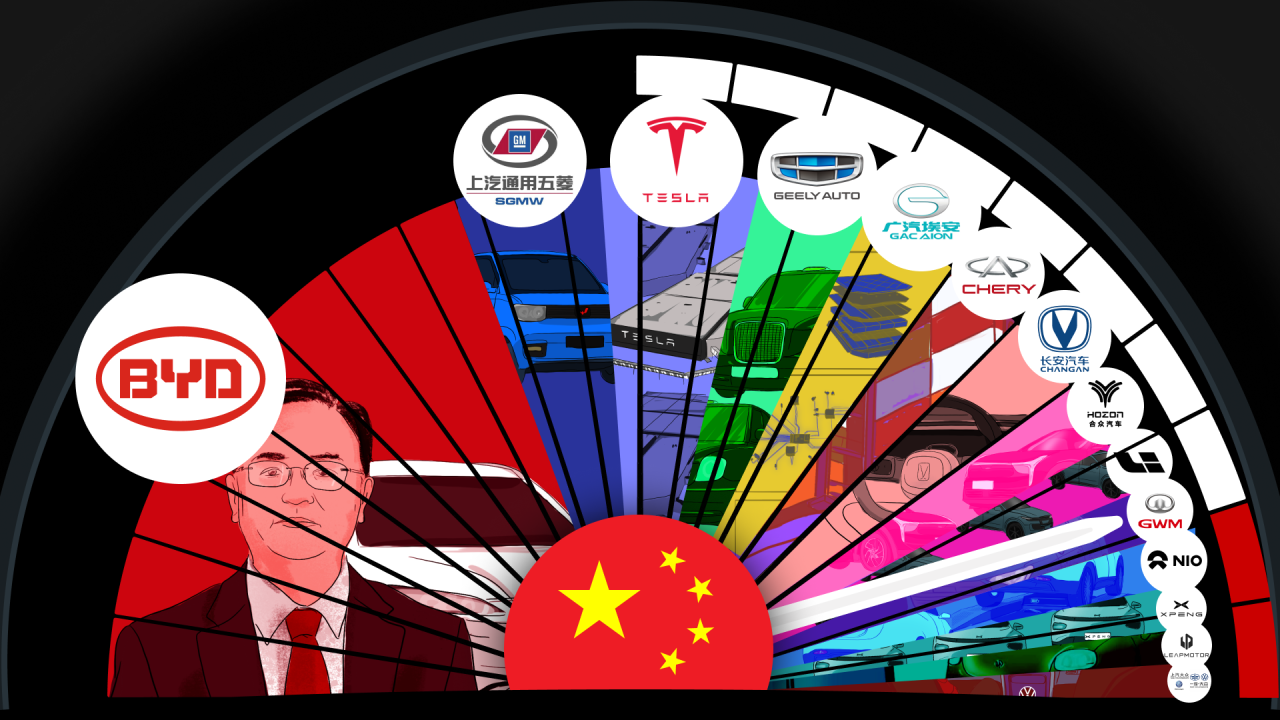Navigating The Complexities: Automotive Brands Facing Challenges In The Chinese Market

Table of Contents
Intense Competition and Market Saturation
The Chinese automotive market is fiercely competitive, characterized by both intense domestic rivalry and the presence of established international players. This saturation presents substantial challenges for brands seeking to gain a foothold or maintain their position.
The Rise of Domestic Brands
Chinese automakers have made remarkable strides in recent years. Brands like BYD, Geely, and NIO are rapidly gaining market share, leveraging several key competitive advantages:
- Cost-effectiveness: Domestic brands often offer vehicles at more competitive price points, appealing to price-sensitive consumers.
- Tailored features: They design vehicles with features specifically tailored to the preferences and needs of Chinese consumers.
- Government support: Government policies and subsidies often favor domestic brands, giving them a significant boost in the market.
The success of these brands is undeniable. BYD, for example, has consistently outperformed many international brands, demonstrating a potent combination of technological innovation and market understanding. Their aggressive expansion into the electric vehicle (EV) sector further highlights their dominance.
Price Wars and Pressure on Profit Margins
The intense competition inevitably leads to price wars, putting immense pressure on the profit margins of international automotive brands. This necessitates strategic responses:
- Focus on premium segments: Some international brands are focusing on higher-end segments where price competition is less intense and brand loyalty is stronger.
- Innovation and differentiation: Investing in technological innovation and unique product features is vital to stand out from the competition.
Analyzing price fluctuations and profit margin trends reveals a clear correlation between market share and pricing strategies. International brands are forced to carefully balance competitiveness with profitability in this highly dynamic environment.
Regulatory Hurdles and Policy Changes
The Chinese government actively shapes the automotive landscape through stringent regulations and policy changes. Navigating these complexities is crucial for success.
Stringent Emission Standards and Electrification Push
China is a global leader in promoting electric vehicles (EVs). Stricter emission standards and substantial government incentives for EVs create a significant challenge for brands reliant on internal combustion engine (ICE) vehicles.
- EV mandates: Regulations mandate increasing percentages of EVs in manufacturers' sales, pushing companies to accelerate their electrification strategies.
- Subsidies and tax breaks: Significant government subsidies and tax incentives for EVs incentivize consumer adoption but simultaneously increase pressure on manufacturers to transition.
This policy shift heavily influences the automotive market, favoring manufacturers who have invested heavily in EV technology and production. The transition from ICE to EV is a major hurdle for many international brands.
Navigating Complex Bureaucracy and Import Regulations
Importing and selling vehicles in China involves navigating a complex bureaucratic landscape, including:
- Licensing and certification: Obtaining the necessary licenses and certifications can be a time-consuming and costly process.
- Customs procedures: Dealing with customs regulations and import duties adds to the operational complexity and cost.
Successfully navigating these regulatory hurdles requires significant resources, expertise, and careful planning. Brands need robust local teams to effectively manage these processes.
Understanding the Unique Preferences of Chinese Consumers
Understanding the evolving preferences of Chinese consumers is paramount for success in the Chinese automotive market.
Shifting Consumer Demands and Brand Loyalty
Consumer preferences in China are dynamic, influenced by several key factors:
- Technological advancements: Chinese consumers are early adopters of new technologies and expect advanced features in their vehicles.
- Social media influence: Social media plays a significant role in shaping brand perception and consumer choices.
- Brand image and reputation: Building a strong and positive brand image is crucial for attracting Chinese consumers.
Brand loyalty is not as entrenched as in some other markets, making continuous innovation and adaptation essential.
The Importance of Digital Marketing and Online Sales
The Chinese automotive market is increasingly digital. A strong online presence and effective digital marketing strategies are vital:
- Online car purchasing: A significant portion of car purchases in China are now completed online.
- WeChat marketing: WeChat, a ubiquitous social media platform in China, is crucial for effective marketing campaigns.
- E-commerce platforms: Utilizing major e-commerce platforms is essential for reaching a large segment of potential customers.
Mastering digital marketing in China is no longer optional; it's a necessity for survival and growth.
Conclusion
Automotive brands facing challenges in the Chinese market must contend with intense competition, stringent regulations, and evolving consumer preferences. Successfully navigating this complex landscape requires a multifaceted approach: adapting to the rise of domestic brands, managing price pressures, complying with evolving regulations, and understanding and catering to the unique demands of Chinese consumers. The importance of digital marketing and a strong understanding of the local market cannot be overstated. Successfully navigating the complexities of the Chinese automotive market requires a nuanced understanding of these challenges. Further research and strategic adaptation are crucial for automotive brands hoping to thrive in this competitive landscape. Learn more about successfully entering the Chinese automotive market today!

Featured Posts
-
 Experience Hues Charm Dong Duong Hotel A Fusion Property
Apr 26, 2025
Experience Hues Charm Dong Duong Hotel A Fusion Property
Apr 26, 2025 -
 Solving The Nyt Spelling Bee February 3rd Puzzle 337
Apr 26, 2025
Solving The Nyt Spelling Bee February 3rd Puzzle 337
Apr 26, 2025 -
 Safety Risks At The Dam During Ajaxs 125th Anniversary
Apr 26, 2025
Safety Risks At The Dam During Ajaxs 125th Anniversary
Apr 26, 2025 -
 Verret Completes Delivery Of Mv Callaway Parker To Ptc
Apr 26, 2025
Verret Completes Delivery Of Mv Callaway Parker To Ptc
Apr 26, 2025 -
 Food Dye Concerns Expert Answers From Dr Sanjay Gupta
Apr 26, 2025
Food Dye Concerns Expert Answers From Dr Sanjay Gupta
Apr 26, 2025
